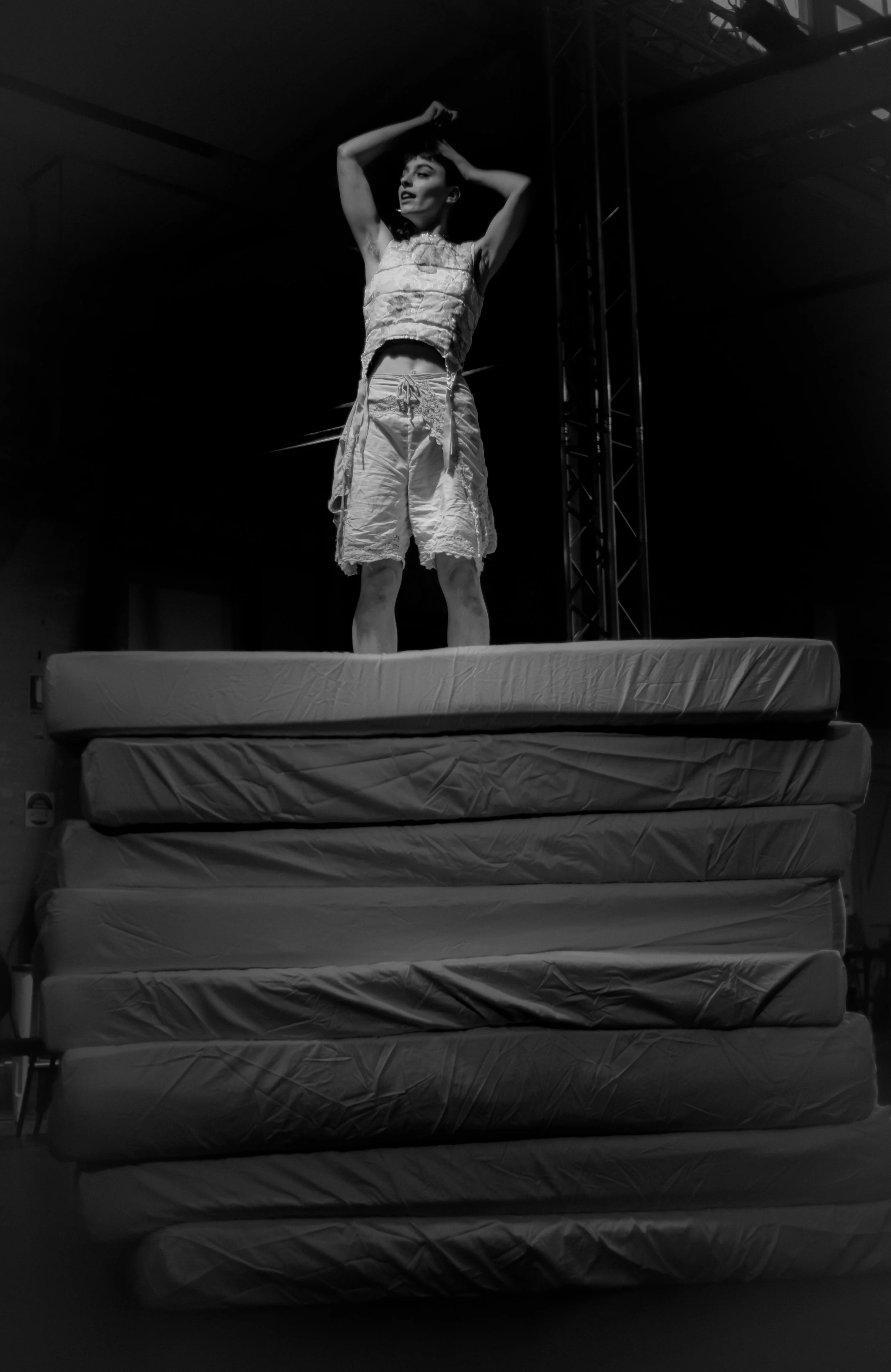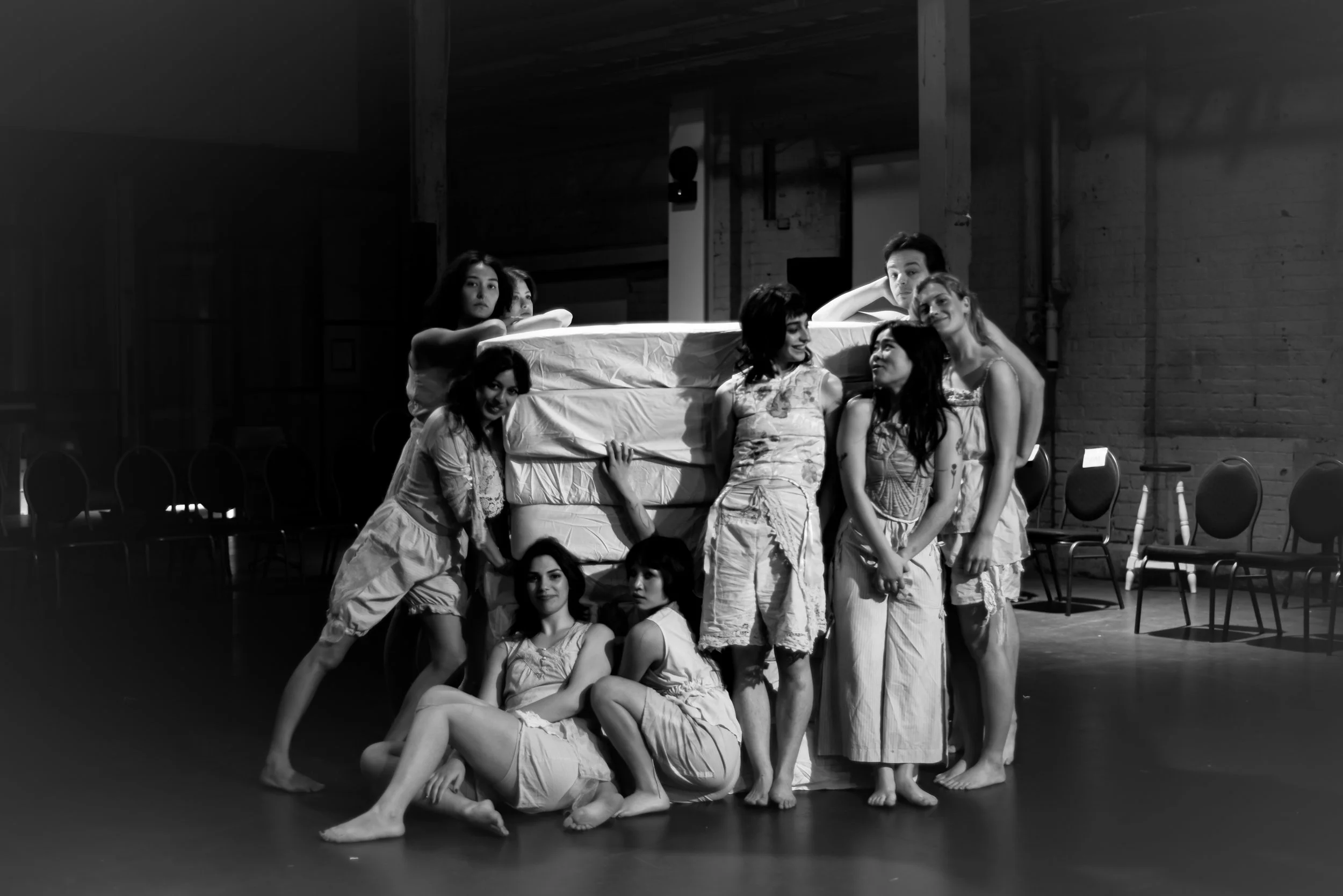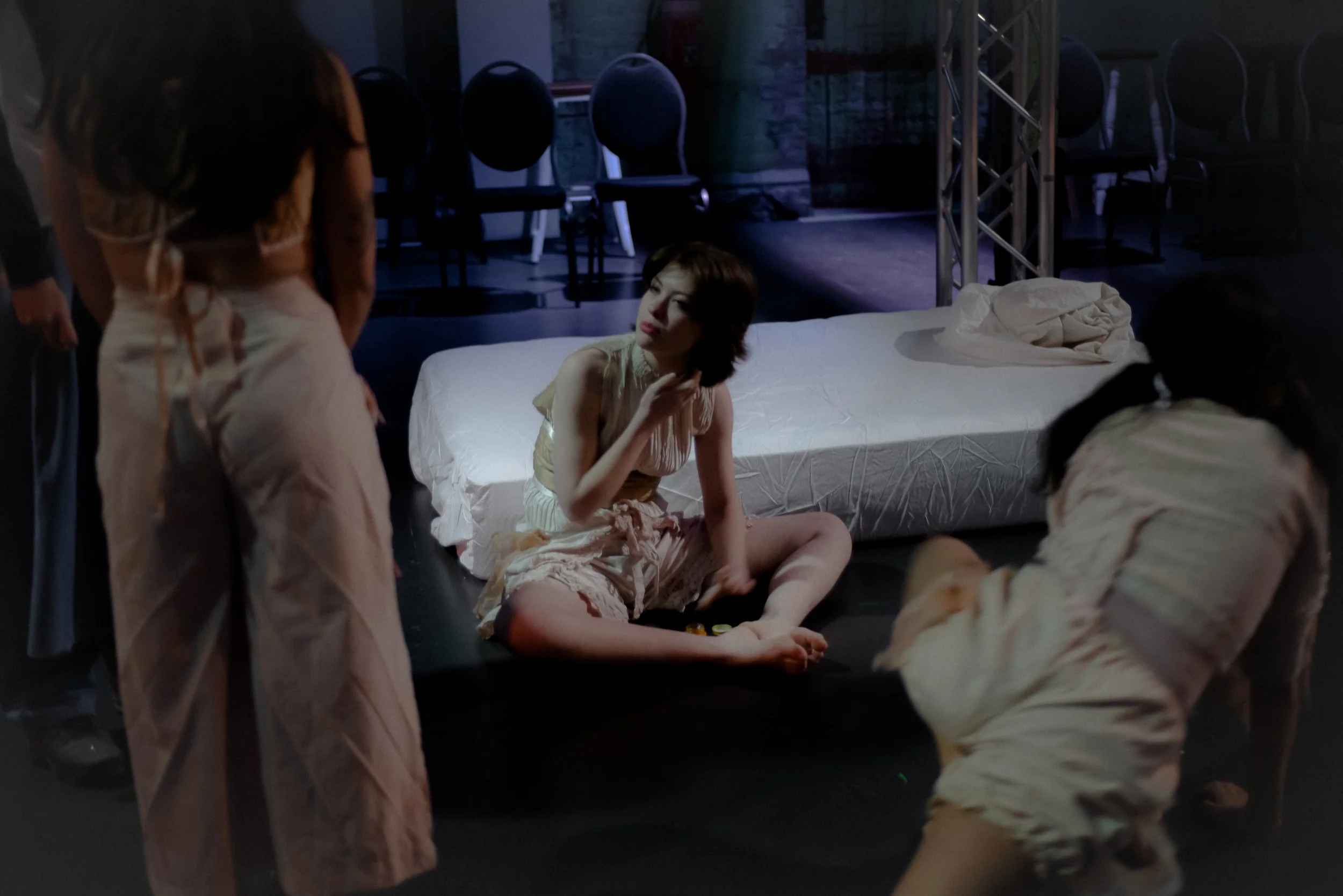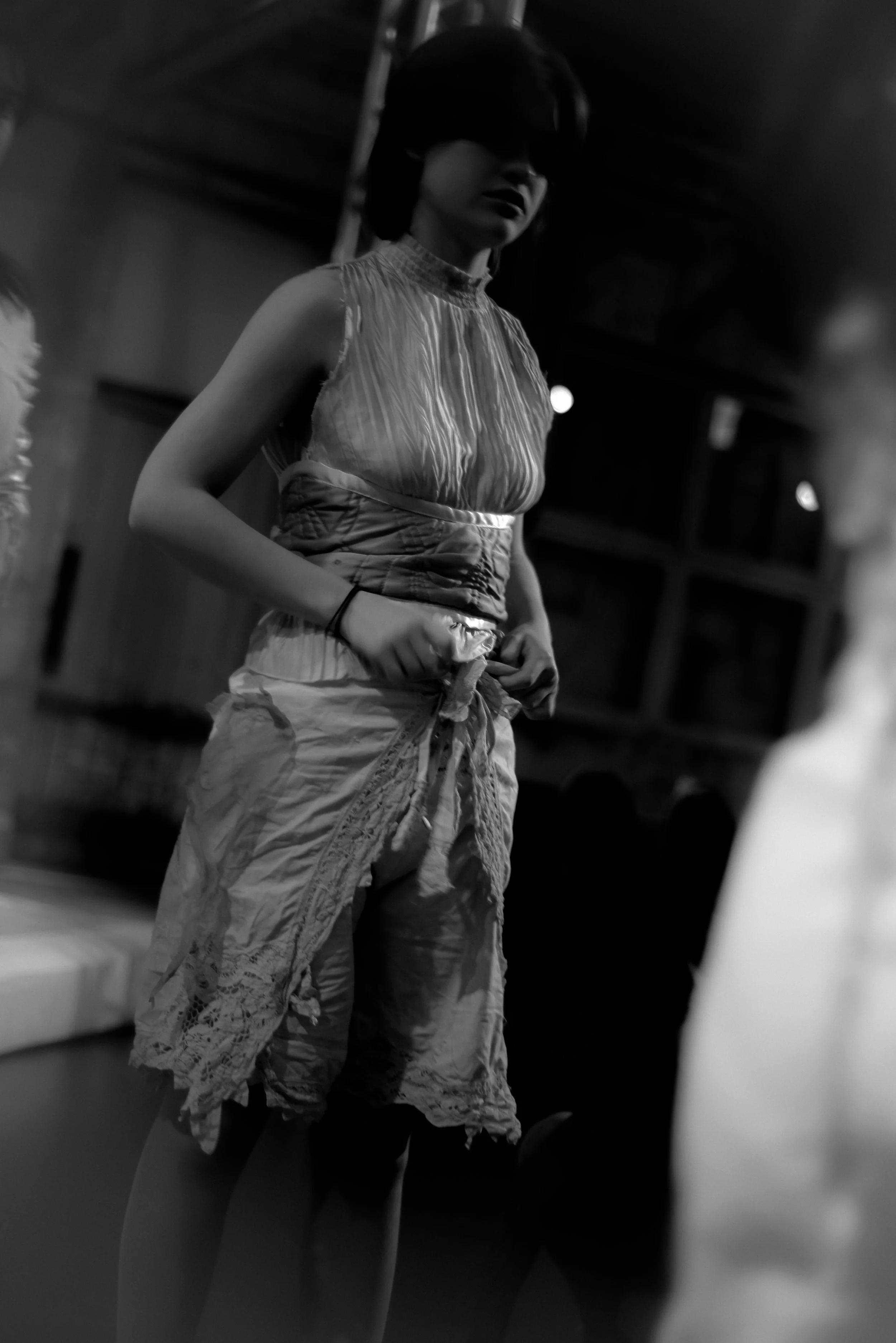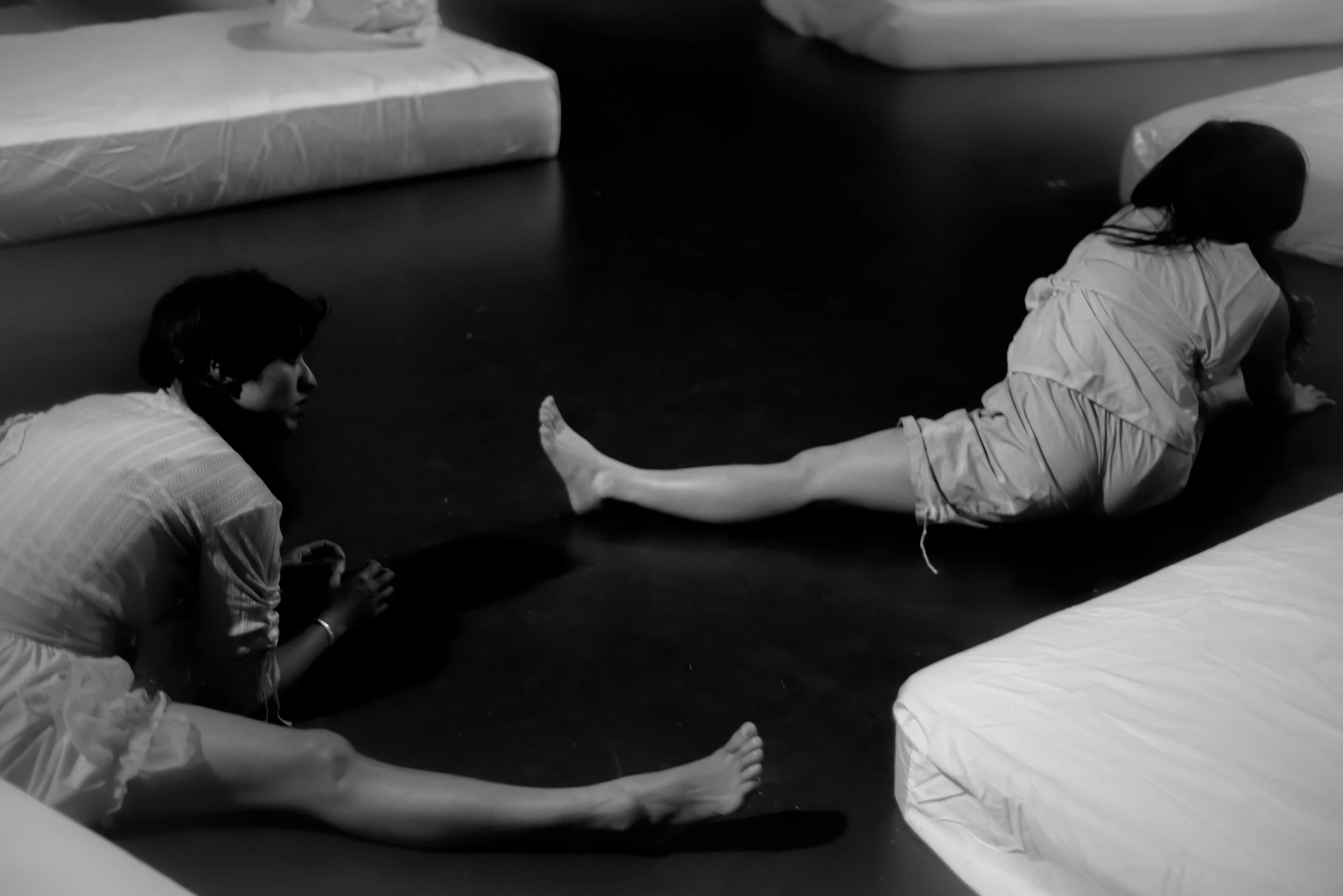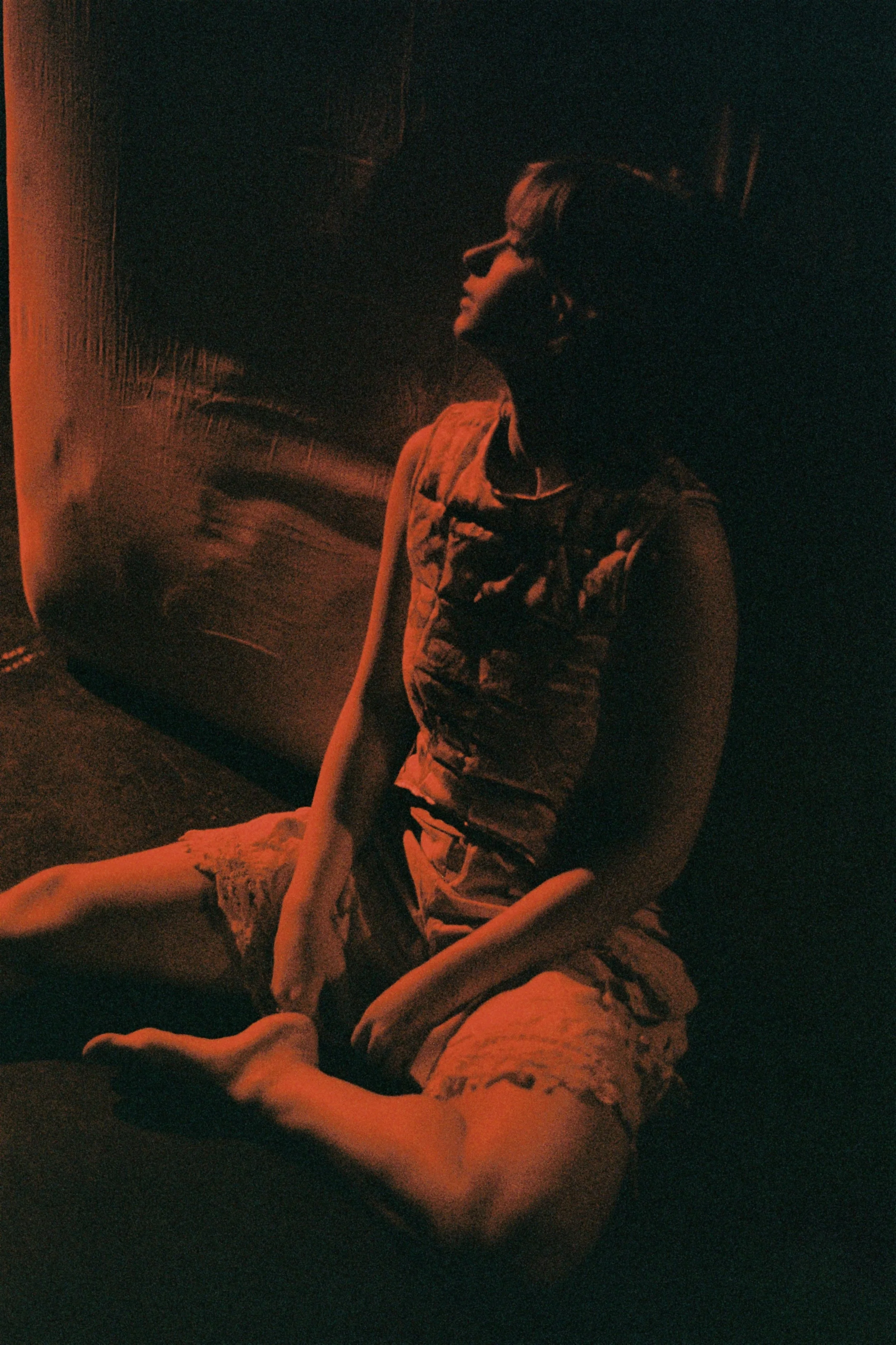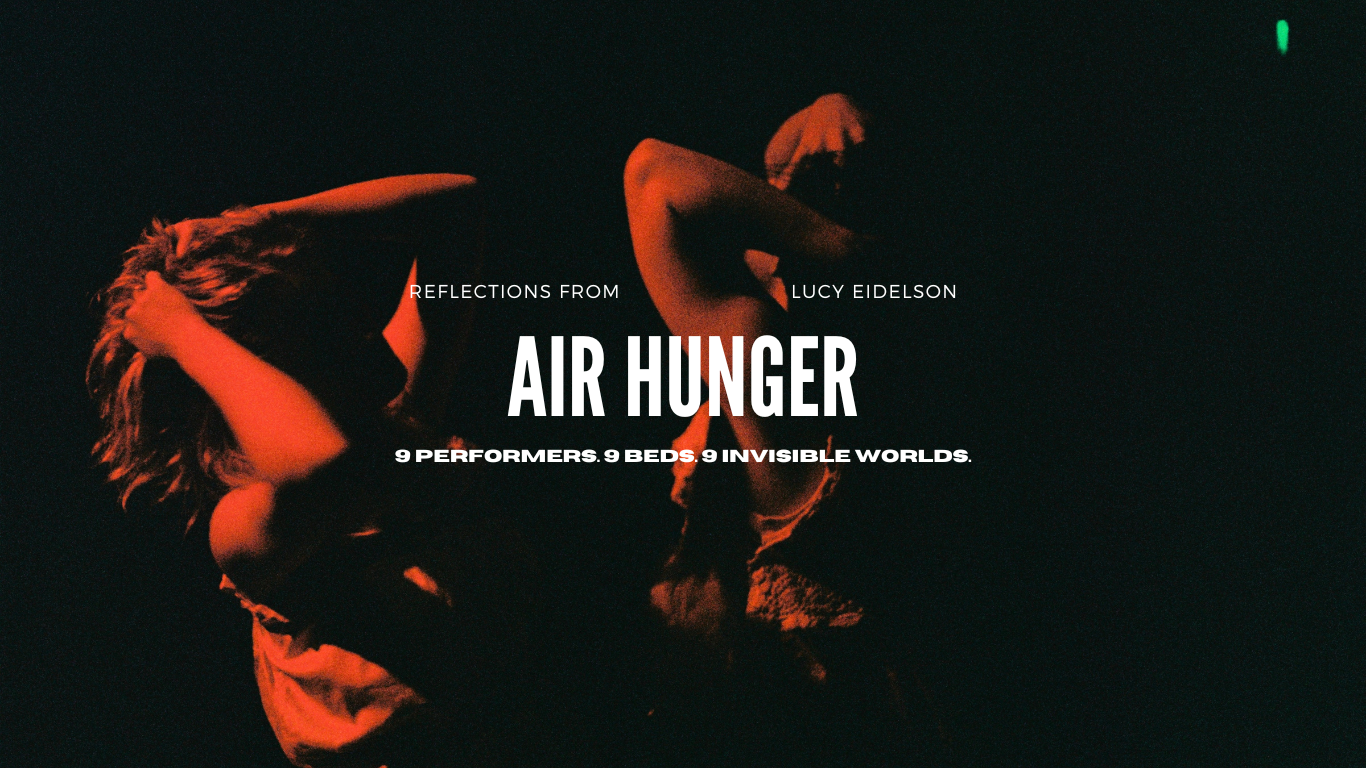
sometimes
I feel that I am the pea
folded
beneath hundreds of mattresses
stacked
one by
one
brittle, heavy this chest
wrapped by caged ribs, falling (falling)
dragging down muscle, mash potato bones
caught in the cracks
hollow caves of
waking dreaming waking
I wrote the opening lines of this poem during the first meeting of the cast and crew of Air Hunger. We were spread across four or five double mattresses on the floor of my dusty garage, getting to know each other. These mattresses that I had begun collecting from family, friends and the side of the road became the well-loved final nine performers of the show. I remember strapping two double mattresses to my partner’s car that cold morning before the meeting, after he had graciously driven me across the city to pick them up from different homes. Somehow it only dawned on me then how logistically challenging the show was going to be!
The task I posed to the group that day was “write a letter to your bed”, followed a few weeks later by “write a letter to yourself from the perspective of your bed.” In my letter, the metaphor of “the pea” became central in my development of the show; it felt important. The small pea was unseen, hidden, stuck beneath all those mattresses yet was nevertheless felt. It tied into the night and reminded me of bedtime stories, fairy tales, kingdoms; a separate realm that was playful and somewhat dreamlike, but with the awareness that these fairytales often had dark and sometimes nightmarish histories. Bridie Noonan, dramaturg and performer, and I discussed our experience of illness; feeling as though you exist in another kingdom, world or planet, and are in, as Susan Sontag describes it, “the night-side of life.” Part of the magic of Air Hunger was this world-building; the squishy, soft, sometimes silly, dream-like world of sheets and mattresses that made embryos, cocoons, ships, forts, cubbies, islands, billowing houses, and dominoes. Yet, it is a world that holds our pain, grief, and loneliness. The scores and sections that made this show were the flesh and bones of very personal emotions and experiences within the realm of illness.
Meeting Bridie Noonan in the early stages of Air Hunger’s development in 2023 was everything I had been longing for in my experience of chronic illness; a friend who knew and understood. Navigating a similar experience to mine, Bridie was also very passionate about bringing these dialogues forward, particularly in an art-making context. Connecting with someone of a similar age who was also working in the creative field and studying at uni whilst navigating an invisible chronic illness fundamentally encapsulated what the work meant to me. I found a community to share, listen, connect with and question: how can we make more space for these experiences and for supporting and holding one another through them? How can we bring these experiences into the public realm in a personal, meaningful, and engaging way? How can we help others understand and empathise with invisible illnesses? How can we translate the pain, longing, and grief of our experiences whilst paying homage to the silliness and richness of the imaginative worlds that we inhabit?
As someone who developed chronic fatigue syndrome/myalgic encephalomyelitis (CFS/ME) after a bad bout of glandular fever, my relationship with my bed and body changed profoundly after becoming ill. This complex relationship catalysed my solo work ‘Air Hunger’ in February 2022. The chosen title is a symptom I experience from my CFS/ME. It’s a breathlessness where my chest feels as though it is closing inwards and concaving and all the energy in my body feels as if it is being sucked inwards into my chest where it disappears, almost like a volcano in reverse. It signals the beginning of fatigue, and often a crash. It took me three years to figure out that this symptom had a name and was medically “real” and tangible. Doctors would explain the cause as being anxiety and would often shrug their shoulders when I expressed that it was not, not bothering to pursue the real cause. This is quite a common yet indescribable experience for people who have invisible chronic illnesses. It’s easy to dismiss things that we cannot see or understand, especially when it feels as though we don’t always have the words to describe them. When it comes to chronic illness, language can really fail us. This is why I wanted to translate part of my experience into movement because of its ability to represent the inexpressible. I resonate with the quote by the author Meghan O’Rourke, who explains, “...the chronically ill person lives in a really different story, which is messy, repetitive, even chaotic. I live in this way in which I’ll be sick and get better and sick and get better.” The cyclical nature of the chronic illness is one of the reasons I use movement as the mode of expression. Dance allows a messy, repetitive and non-linear narrative to materialise into something poetic and emotionally resonant.
I wanted to develop this work and these concepts into a full-length show, and extend it to eight other performers, all with different lived experiences of chronic invisible illness and mental health. A feeling of connection, warmth and community quickly expanded as artists increasingly joined the cast, crew, and collaborators, and as friends and family rallied behind the work. I am so grateful to everyone involved and to all my friends, family and wider community who helped make it possible. My favourite part of the process was working with such an amazing group of people, and the connections and friendships that this project helped to create. The generosity, openness and love that everyone brought to the work made the experience one of my favourite things I've ever done and been able to share alongside others.
Within the show, each mattress and performer represents a world, an experience, a bedroom, and a confined space. When we are sick alone in bed and tucked away in our houses, we cannot see all the other people who are also sick and alone in bed in their respective confined spaces; some perhaps on the same street or in the same city; others perhaps across the world. Within the experience of chronic illness, there’s isolation but there's also a growing collectivism, particularly with the pandemic with more and more people experiencing long-term illness. Through having nine performers on nine mattresses, I hoped to represent both the isolation and intimacy of the bed, juxtaposed with a growing collective experience. My understanding of chronic illness is that it’s complex. Although it's different for everyone, I would say that a common denominator within this vast experience is the humble bed.
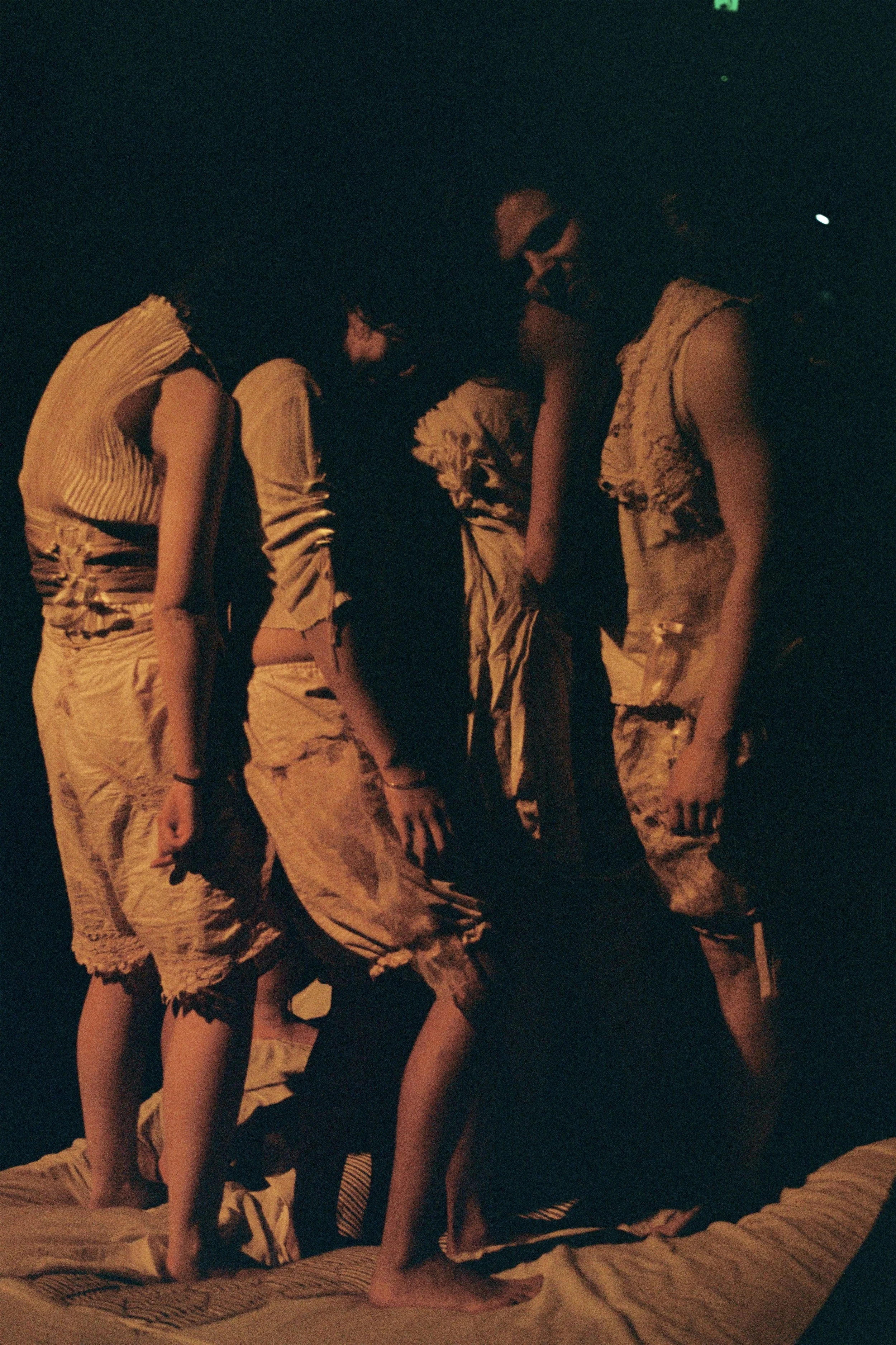
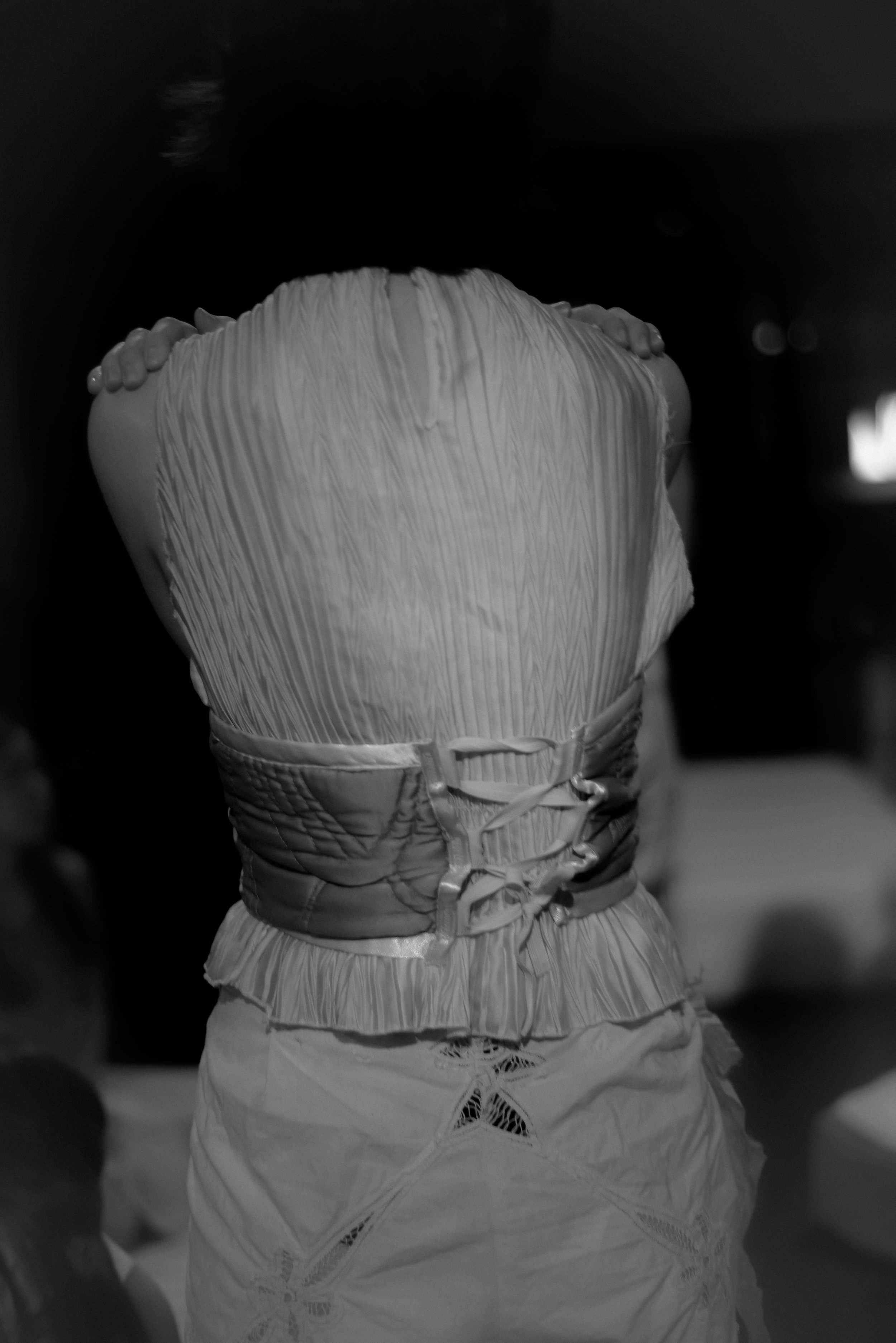
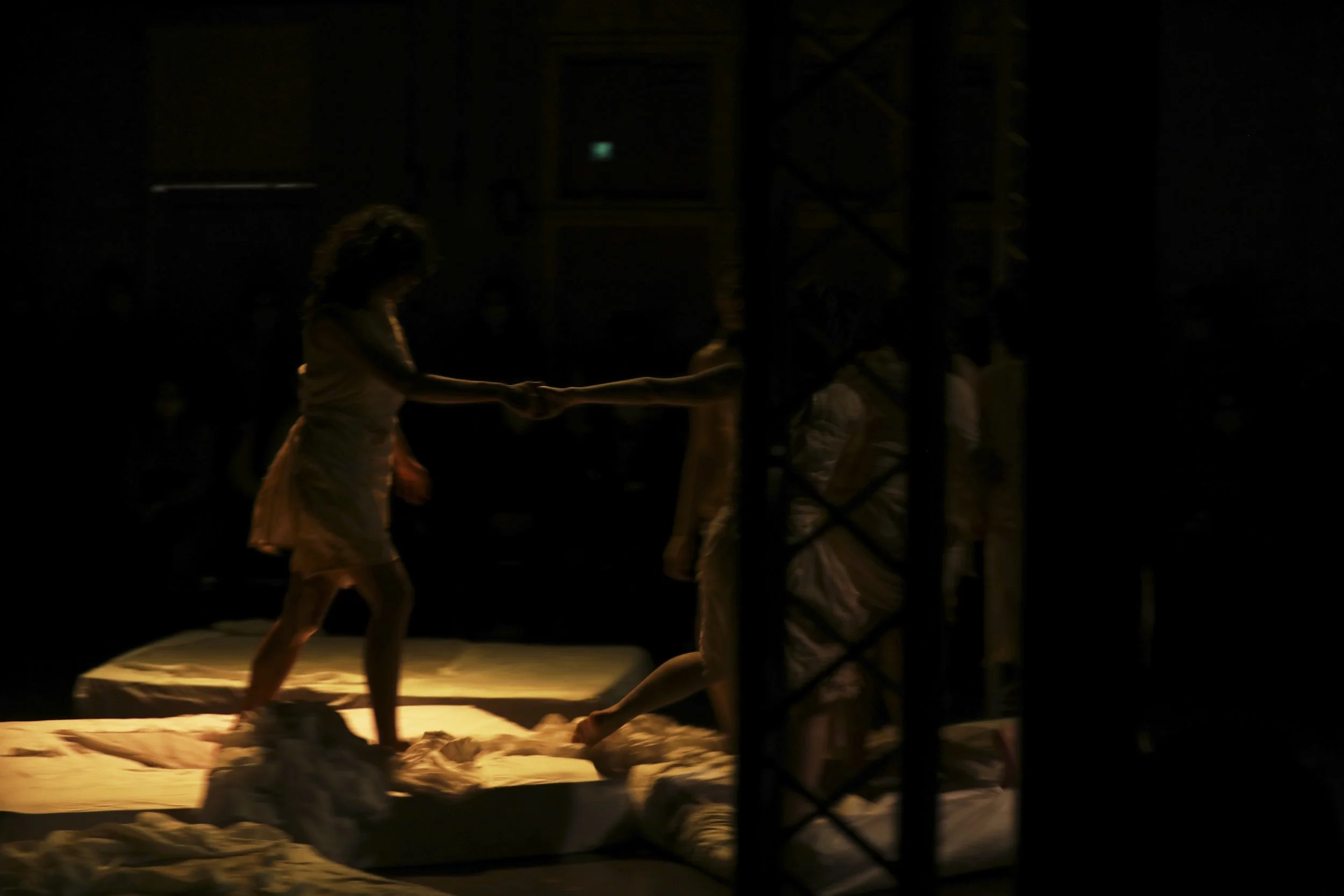
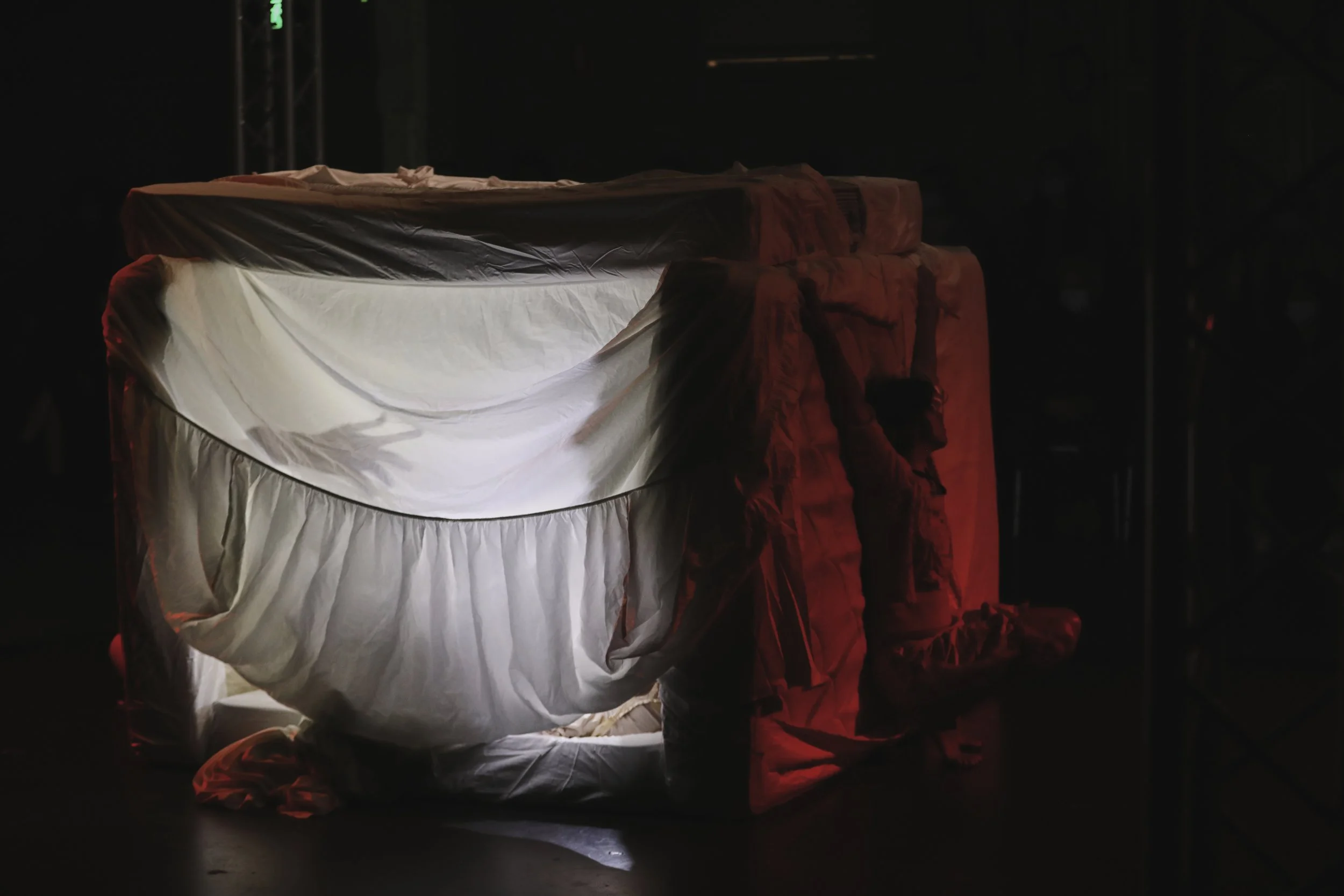
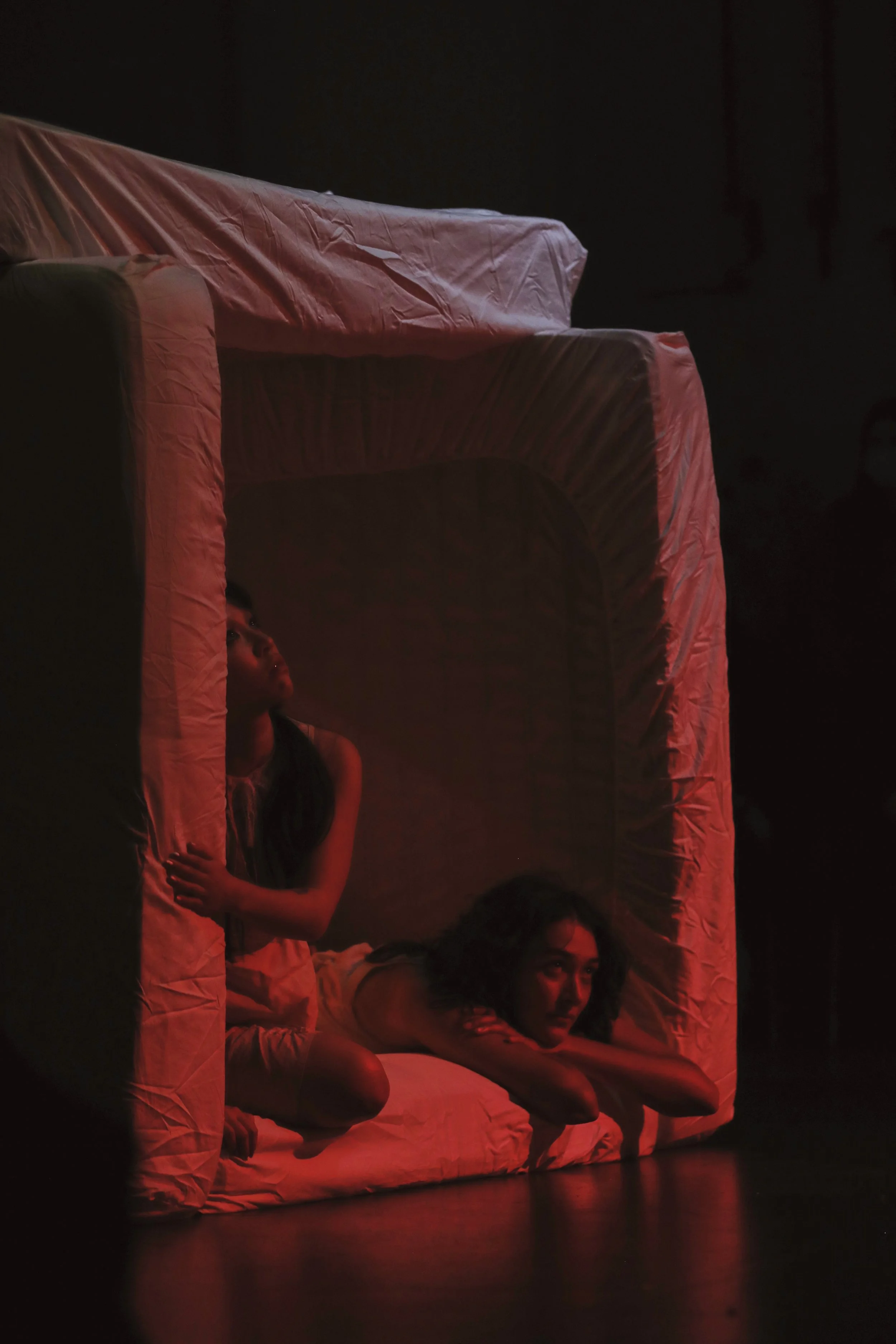

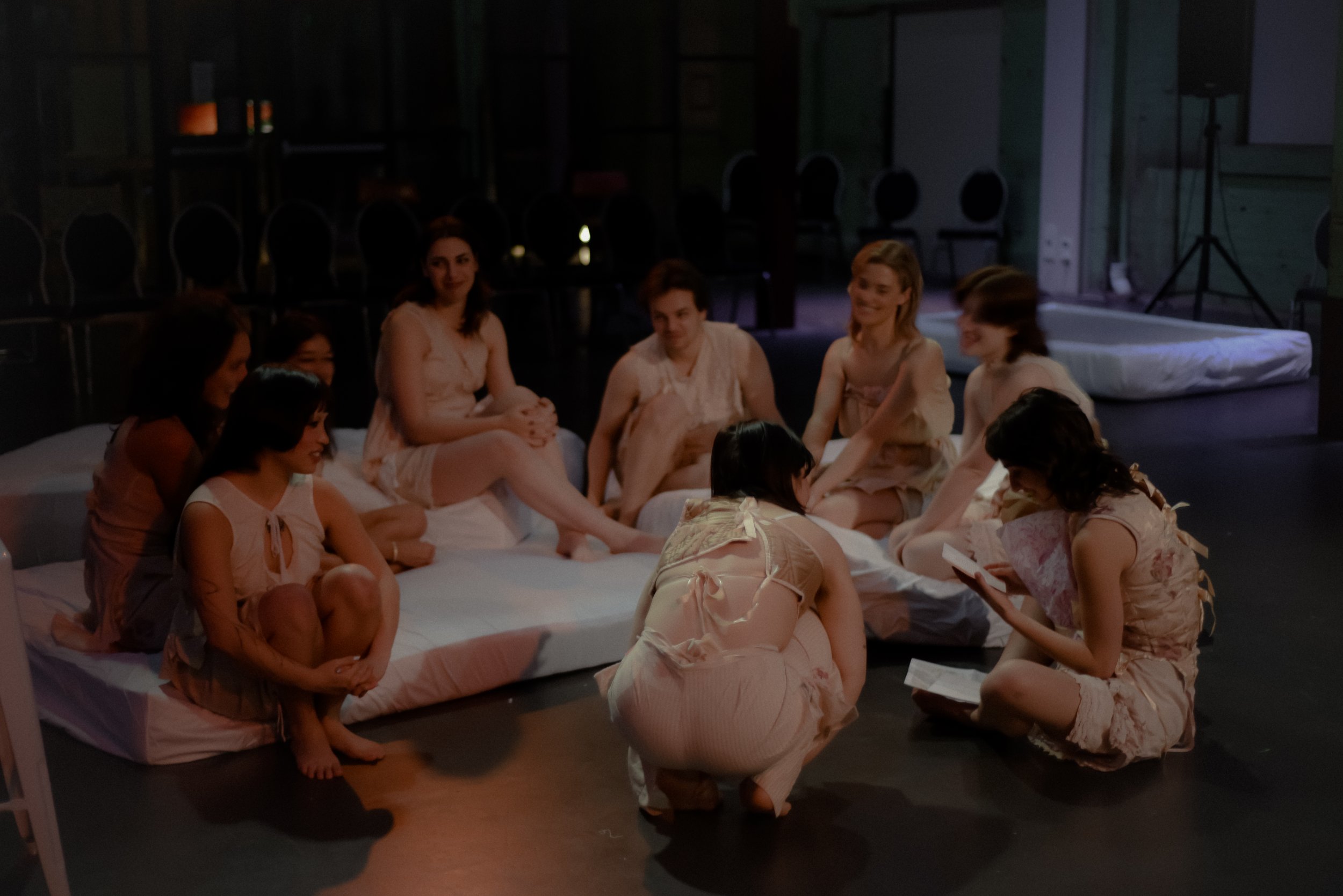
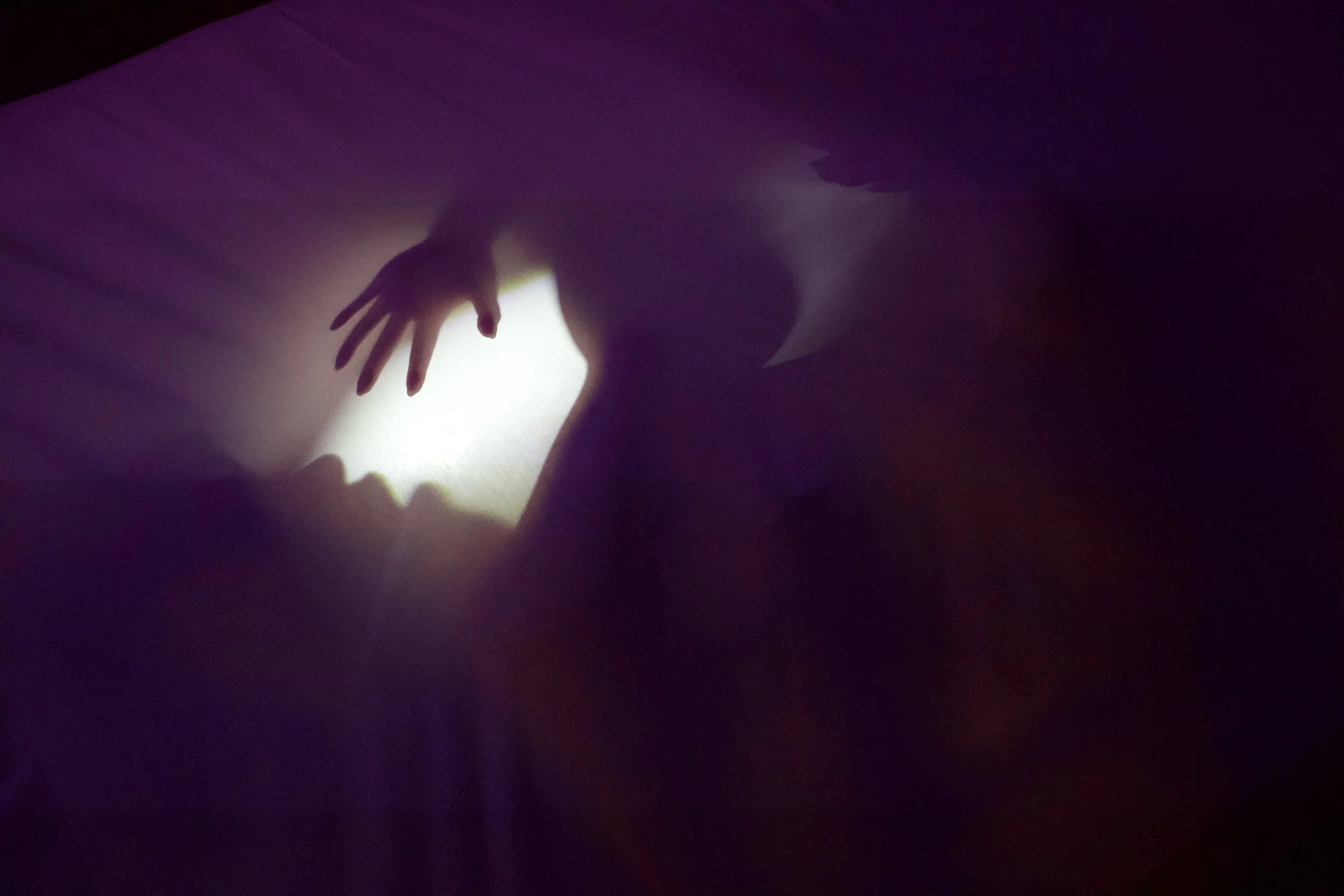
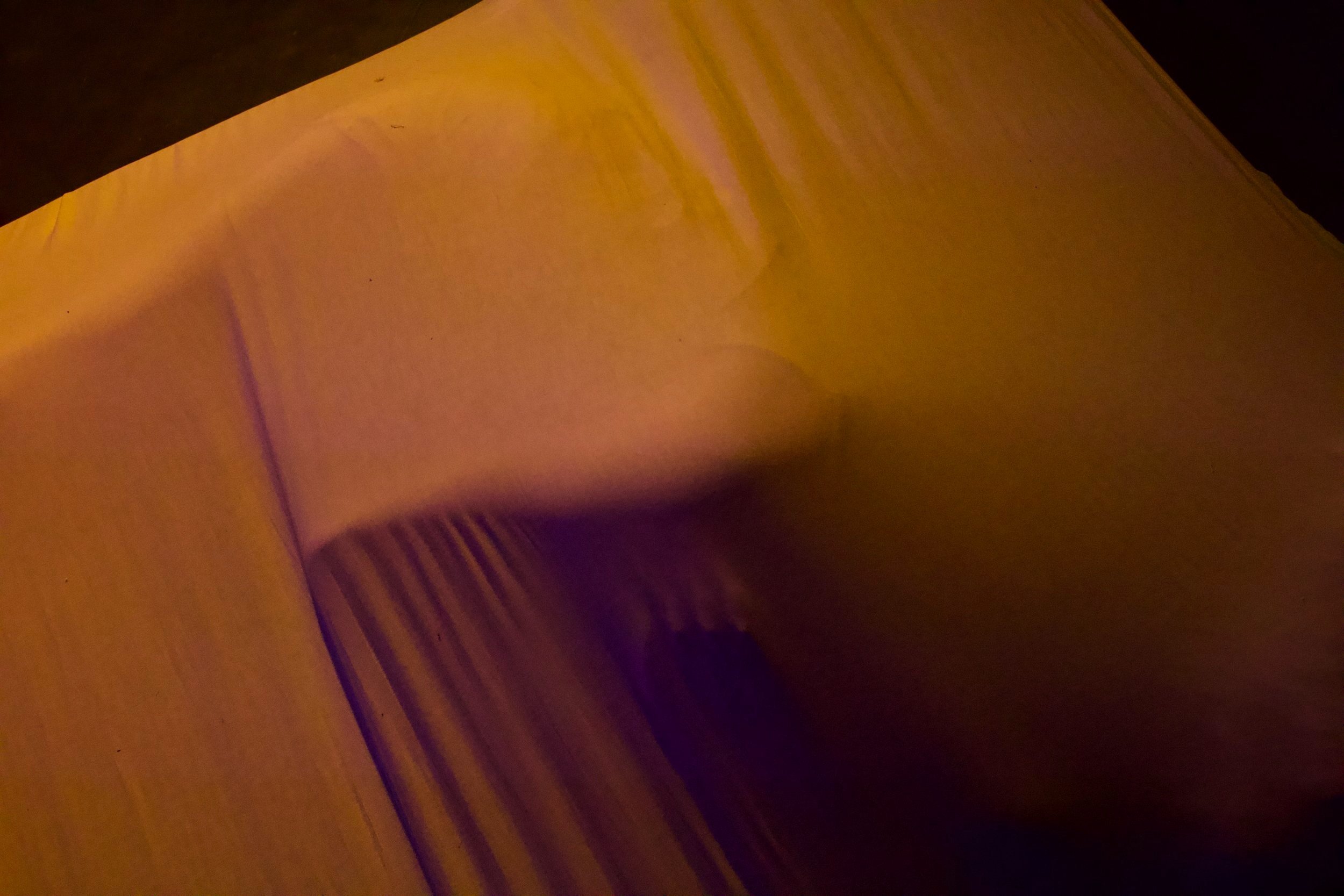
CREDITS
Editing
Michelle Agnelli
Photography
Joelle Parisotto, Sonny Witton, Imogen Howden
Performance
Lucy Eidelson (she/they): Creator, Director, Co-Choreographer & Performer
Chiharu Valentino (she/her): Co-Choreographer & Performer
Bridie Noonan (she/they): Dramaturg & Performer
Alec Katsourakis (he/they): Performer
Bee Bleechmore (she/ they): Performer
Ella Ferris (she/ they): Performer
Kassie Junkeer (she/her): Performer
Joyce Liu (she/they): Performer
Maddie Cushion (she/her): Performer
Paris Robinson (she/they): Understudy
Greta Kantor (she/her): Producer and Assistant Stage Manager
Zari Moss (they/them): Marketing Lead and Production Manager
Paige Spurrell (she/her): Assistant Production Manager
Poppy Gordon (she/her): Stage Manager
Noah Riseley (he/him): Sound Designer and Composer
Vindi Ferguson (she/her): Sound Artist (Violinist)
Maggie Kontev (she/her): Sound Artist and Recordings
Lewis Shaw (he/him): Sound Advisor / Sound Tech
Char Lee (they/them): Costume Designer
Carmen Lye (she/her): Costume Maker
Klari Agar (they/them): Lighting Designer
Sam Carson (she/her): Lighting Technician
Issey/Buzzy Christensen (she/they): Installations
